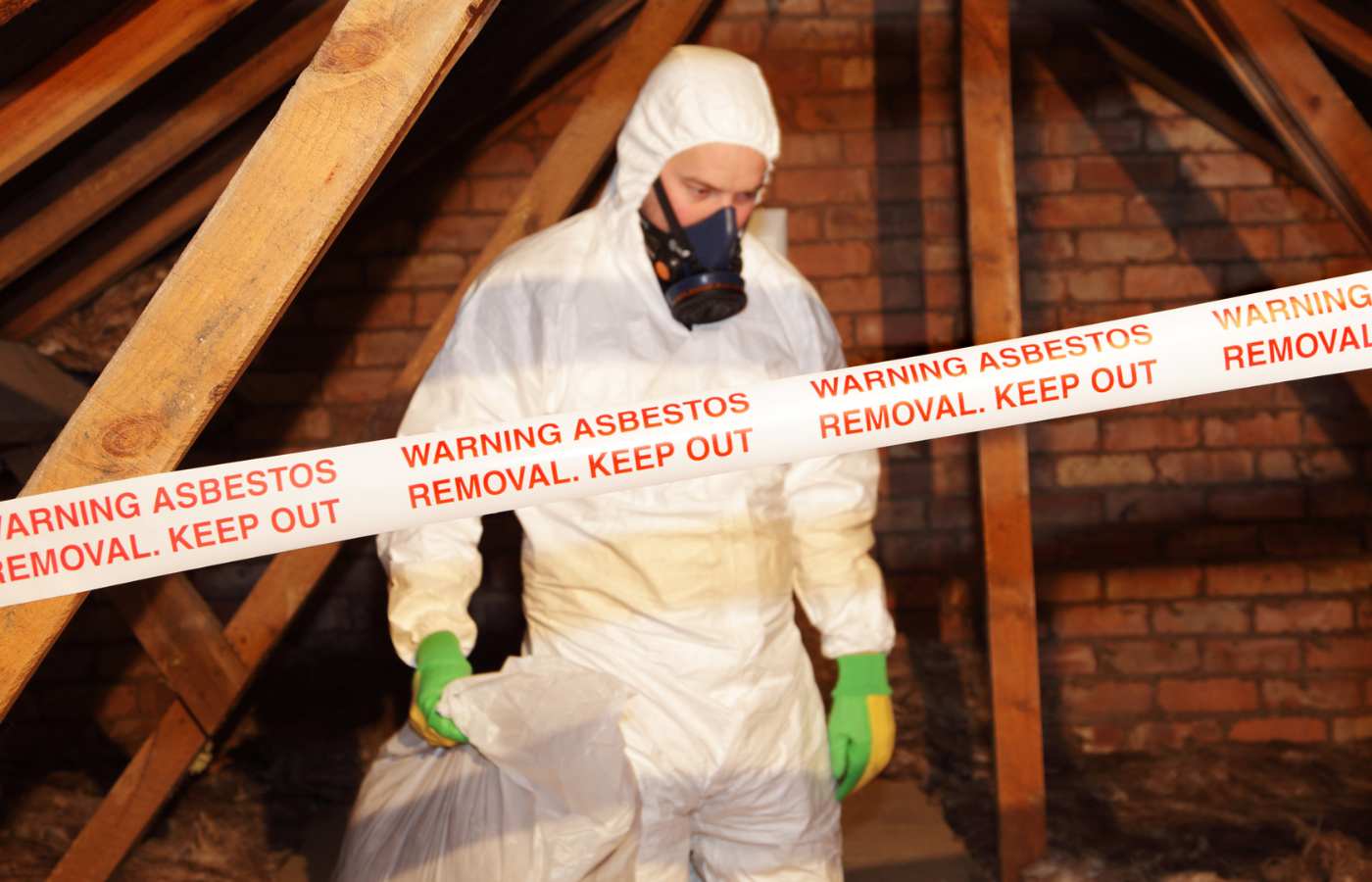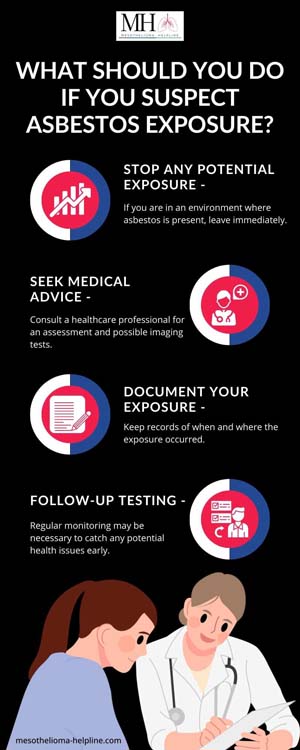Asbestos is a naturally occurring mineral fiber that was widely used in construction and manufacturing due to its heat resistance and durability. However, it has been linked to serious health risks, including lung disease and cancer. This article will explore what happens if you breathe in asbestos once, detailing the potential health effects, the body's response, and the importance of seeking medical advice.
Table of Contents
- What Is Asbestos?
- How Does Asbestos Enter the Body?
- What Happens If You Breathe in Asbestos Once?
- What Are the Health Risks Associated with Asbestos Exposure?
- How Long Does It Take for Symptoms to Appear?
- What Should You Do If You Suspect Asbestos Exposure?
- How Is Asbestos Exposure Diagnosed?
- Conclusion
- Frequently Asked Questions (FAQs)
What Is Asbestos?
Asbestos is a group of six naturally occurring silicate minerals that have been used in various industries for thousands of years. Its unique properties, including fire resistance, tensile strength, and insulating capabilities, made it a popular choice in construction, automotive, and manufacturing. The primary types of asbestos are chrysotile, amosite, crocidolite, tremolite, actinolite, and anthophyllite.
Key Characteristics of Asbestos
- Heat Resistance: Asbestos can withstand high temperatures, making it useful in insulation.
- Durability: It is resistant to wear and tear, contributing to its long-lasting nature.
- Chemical Resistance: Asbestos does not react with many chemicals, adding to its utility in various applications.
While asbestos has been banned in many countries due to its health risks, it is still present in older buildings and products.
How Does Asbestos Enter the Body?
When asbestos is disturbed, it releases tiny fibers into the air. These fibers can be inhaled or ingested, leading to potential health problems.
Routes of Exposure
- Inhalation: The most common way asbestos enters the body is through the respiratory system. Breathing in airborne asbestos fibers can lead to serious lung conditions.
- Ingestion: Although less common, asbestos can also enter the body through ingestion, particularly if fibers settle on food or drink.
- Skin Contact: While skin contact is not a primary route of exposure, asbestos can remain on clothing or skin, leading to secondary exposure.
What Happens If You Breathe in Asbestos Once?
The health effects of asbestos exposure can vary based on several factors, including the type and amount of asbestos inhaled, the duration of exposure, and individual susceptibility.
Immediate Effects
Breathing in asbestos once might not lead to immediate health effects. However, the asbestos fibers can remain in the lungs and body for many years, posing potential long-term health risks.
Long-Term Effects
- Inflammation: Asbestos fibers can cause irritation and inflammation in lung tissue.
- Asbestosis: This chronic lung disease occurs due to long-term exposure and leads to scarring of lung tissue, which can cause difficulty breathing.
- Mesothelioma: A rare and aggressive cancer primarily linked to asbestos exposure, mesothelioma may develop many years after the initial exposure.
- Lung Cancer: Inhalation of asbestos increases the risk of developing lung cancer, especially in individuals who smoke.
Factors Influencing Health Outcomes
- Type of Asbestos: Different types of asbestos have varying toxicity levels. For example, crocidolite is considered more hazardous than chrysotile.
- Exposure Duration: The length of time you were exposed can significantly affect health outcomes.
- Personal Health: Pre-existing health conditions, smoking history, and genetic factors can all influence an individual’s susceptibility to asbestos-related diseases.
What Are the Health Risks Associated with Asbestos Exposure?
Short-Term Health Risks
While a single exposure may not lead to immediate symptoms, it is essential to understand the potential short-term risks, including:
- Respiratory Irritation: Coughing, shortness of breath, and chest tightness may occur after inhaling asbestos.
- Allergic Reactions: Some individuals may experience allergic responses to asbestos fibers.
Long-Term Health Risks
- Asbestosis: As previously mentioned, this condition results from prolonged exposure and leads to irreversible lung damage.
- Lung Cancer: The risk is higher for individuals with a history of smoking.
- Mesothelioma: There is no safe level of asbestos exposure, and even brief exposure can increase the risk of developing this cancer.
How Long Does It Take for Symptoms to Appear?
Latency Period
One of the most concerning aspects of asbestos exposure is the latency period. Symptoms of asbestos-related diseases may not appear until 20 to 50 years after exposure.
Symptoms to Watch For
- Chronic Cough: A persistent cough that does not go away.
- Shortness of Breath: Difficulty breathing during normal activities.
- Chest Pain: Discomfort or pain in the chest area.
- Fatigue: Unusual tiredness or weakness.
- Weight Loss: Unexplained weight loss may be a sign of serious health issues.
If you have experienced any of these symptoms after potential asbestos exposure, it is crucial to seek medical attention immediately.
What Should You Do If You Suspect Asbestos Exposure?
Steps to Take
If you believe you have been exposed to asbestos, consider the following steps:
- Stop Any Potential Exposure: If you are in an environment where asbestos is present, leave immediately.
- Seek Medical Advice: Consult a healthcare professional for an assessment and possible imaging tests.
- Document Your Exposure: Keep records of when and where the exposure occurred.
- Follow-Up Testing: Regular monitoring may be necessary to catch any potential health issues early.
Importance of Professional Help
Asbestos exposure can have severe health implications. Professional assessment and monitoring can help detect any early signs of asbestos-related diseases.
How Is Asbestos Exposure Diagnosed?
Diagnosing asbestos exposure typically involves a combination of medical history, physical examinations, and imaging tests.
Diagnostic Methods
- Medical History: A detailed account of your exposure history, symptoms, and lifestyle will be taken.
- Physical Examination: Doctors will assess your respiratory health and look for signs of lung disease.
- Imaging Tests: X-rays and CT scans can reveal abnormalities in the lungs indicative of asbestos exposure.
- Lung Function Tests: These tests measure how well your lungs are working.
Conclusion
Breathing in asbestos, even once, can lead to significant health risks, particularly when it comes to lung diseases and cancer. The effects may not be immediately apparent, but long-term exposure can result in serious conditions such as asbestosis, lung cancer, and mesothelioma. If you suspect you have been exposed to asbestos, it is crucial to seek medical advice as soon as possible for proper assessment and monitoring.
Frequently Asked Questions (FAQs)
1. Can I be harmed by breathing in asbestos only once?
While a single exposure may not lead to immediate health problems, the risk of developing serious conditions increases with any exposure to asbestos. Long-term health effects may not appear for many years.
2. How can I tell if I have been exposed to asbestos?
Signs of exposure can include respiratory issues like chronic cough, shortness of breath, and chest pain. If you suspect exposure, consult a healthcare professional for evaluation and possible diagnostic testing.
3. What should I do if I find asbestos in my home?
If you discover asbestos in your home, do not disturb it. Contact a licensed asbestos abatement professional to assess and safely remove it.
4. Is there a safe level of asbestos exposure?
There is no safe level of asbestos exposure. Even minimal exposure can increase the risk of developing asbestos-related diseases.
5. How is mesothelioma related to asbestos exposure?
Mesothelioma is a rare and aggressive cancer primarily caused by inhaling asbestos fibers. Symptoms may not appear until decades after exposure, making early detection challenging.



